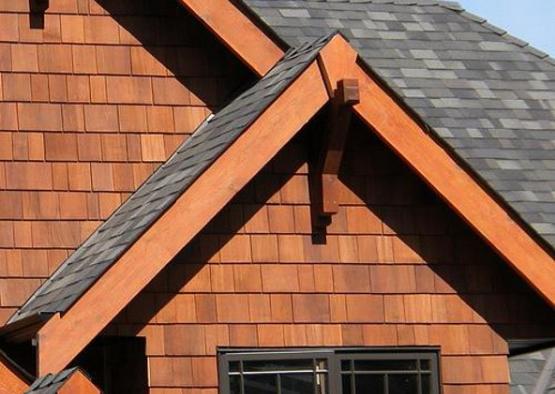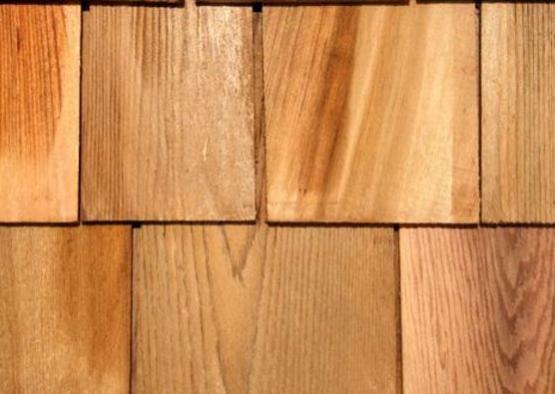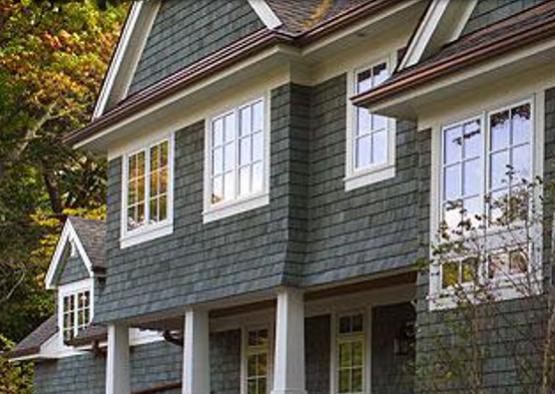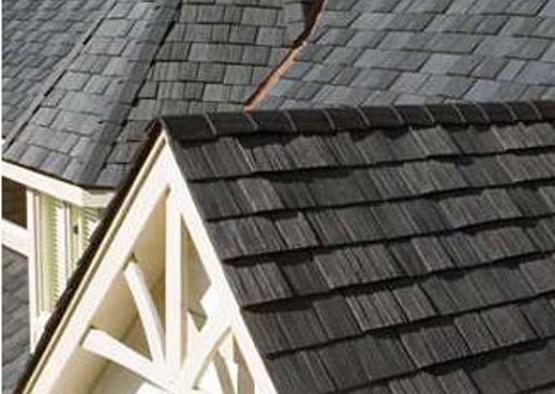Timber shingles and shakes provide eye-catching and practical forms of timber cladding for roofs and walls, on domestic and commercial structures around the world. Most shingles and shakes used in Australia are made from western red cedar and are imported from Canada. Some are also produced locally from species such as rose sheoak and hardwoods.
A shingle, generated from a sawn piece of timber is characterised by its relatively smooth face and back, while in contrast a shake, essentially a split piece of timber, is dominated by a strongly textured surface.
Australian producers generally follow the set standard sizes adopted in North America for western red cedar shingles and shakes. Widths are generally random, with only length and butt thickness specified. The table below provides standard sizing for western red cedar shingles.
Length (mm) | Thickness (mm) |
400 | 10 |
450 | 11 |
600 | 13 |
Timber shingles and shakes are most commonly used on roofs as cladding. While they are typically applied in straight single courses, this can be varied to achieve other more decorative effects. Detailed information about the construction of shingle clad roofs is best sought from individual suppliers.
When applied to walls, shingles and shakes are generally fixed over solid or spaced sheathing. 9mm or thicker exterior grade plywood provides a smooth, even base for fixing. The inherent strength of plywood also offers the added benefit of giving increased structural rigidity to the building.
For long term durability shingles and shakes can be dipped in a water repellent preservative formulation prior to installation. On roofs they are often given no further treatment and will subsequently weather to a soft silver-grey tone. On walls, where access for maintenance may be easier, pigmented stains are often used to retain a natural looking colour.








Timber shingles and shakes provide eye-catching and practical forms of timber cladding for roofs and walls, on domestic and commercial structures around the world. Most shingles and shakes used in Australia are made from western red cedar and are imported from Canada. Some are also produced locally from species such as rose sheoak and hardwoods.
A shingle, generated from a sawn piece of timber is characterised by its relatively smooth face and back, while in contrast a shake, essentially a split piece of timber, is dominated by a strongly textured surface.
Australian producers generally follow the set standard sizes adopted in North America for western red cedar shingles and shakes. Widths are generally random, with only length and butt thickness specified. The table below provides standard sizing for western red cedar shingles.
Length (mm) | Thickness (mm) |
400 | 10 |
450 | 11 |
600 | 13 |
Timber shingles and shakes are most commonly used on roofs as cladding. While they are typically applied in straight single courses, this can be varied to achieve other more decorative effects. Detailed information about the construction of shingle clad roofs is best sought from individual suppliers.
When applied to walls, shingles and shakes are generally fixed over solid or spaced sheathing. 9mm or thicker exterior grade plywood provides a smooth, even base for fixing. The inherent strength of plywood also offers the added benefit of giving increased structural rigidity to the building.
For long term durability shingles and shakes can be dipped in a water repellent preservative formulation prior to installation. On roofs they are often given no further treatment and will subsequently weather to a soft silver-grey tone. On walls, where access for maintenance may be easier, pigmented stains are often used to retain a natural looking colour.

A. Lewis & Co. PTY LTD
Allied Forest Products

Cameron's H Hardware

Cedar Roofing

Dromana Discount Timber

Fineworx Joinery

Garde Timber Pty Ltd

NOWarchitecture

Ridgewood Timber Pty Ltd

Seriani Designs









